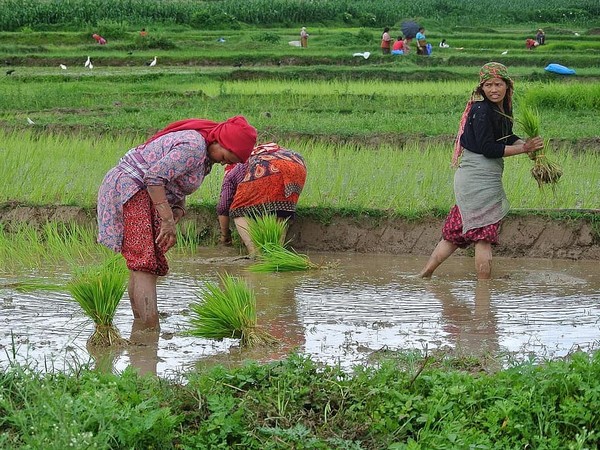Nepali farmers busy planting paddy as monsoon sets in
Fields near Manohara River in Sankhu in the north-eastern corner of Kathmandu Valley these days buzzes with sounds of running tractor, people and melodies twining with one another, commonly known as 'Ropain Song', as farmers have begun making rapid progress in transplanting paddy amid good monsoon season.

- Country:
- Nepal
Fields near Manohara River in Sankhu in the north-eastern corner of Kathmandu Valley these days buzzes with sounds of running tractor, people and melodies twining with one another, commonly known as 'Ropain Song', as farmers have begun making rapid progress in transplanting paddy amid good monsoon season. Transplantation has been completed on 18.4 per cent of the country's 1.42 million hectares of rice fields as of Tuesday (June 23), compared to 12.7 per cent during the same period last year, Kathmandu Post reported citing preliminary data from the Ministry of Agricultural Development.
Nepal is heavily dependent on the monsoon and this year the rain gods have been quite merciful. As of Tuesday, transplantation has been completed on 14 per cent of the 984,339 hectares of rice fields in the Tarai region. Likewise, transplantation in the mountains and hills has been completed on 27.5 per cent of the 58,438 hectares and 28.3 per cent of the 382,569 hectares of rice fields respectively. The Tarai, which is the largest paddy producing region in the country, accounts for 71 per cent of the total rice acreage. The hills account for 25 per cent and the mountain region 4 per cent, the media reported.
Plantation of paddy saplings in the field known as "Ropain" brings on high significance for farmers in Nepal, which is primarily dominant during the monsoon season which begins from June and lasts for four months. "The overall rise in the transplantation rate can be attributed to faster progress in the hill and mountain regions," said Shankar Sapkota, assistant spokesperson for the ministry.
"Transplantation in the Tarai region, the country's food basket, is yet to pick up pace," he added. The country is likely to see paddy transplantation of above 97 per cent this year if the current rainfall trend continues, Sapkota said.
Last year, 9 per cent of the country's total rice fields were left unplanted due to a poor monsoon. June rains are important for transplantation, but they make up a smaller portion of the season's total rainfall. Paddy growth and yields will be mainly influenced by how the monsoon progresses in the coming months," said Yubak Dhoj GC, Director General of the Department of Agriculture. (ANI)
(This story has not been edited by Devdiscourse staff and is auto-generated from a syndicated feed.)
- READ MORE ON:
- Kathmandu Valley
- Nepali
- Kathmandu Post










